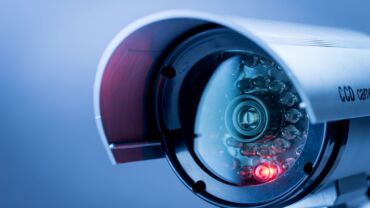Working remotely during the COVID-19 pandemic created cybersecurity threats and other technology challenges for many tax and accounting firms, says longtime accounting technology consultant Randy Johnston.
“A lot of CPA firms and small businesses were not ready for the stay-at-home orders,” Johnston explains. “Their security had been deficient, and collaboration and workflow tools were not sufficient, so it was devastating to them.”
Moreover, the lack of preparedness hampered how firms could get work done early in the pandemic. “They couldn’t collaborate, they didn’t have paperless systems or processes, they didn’t have phone systems that worked. It was ugly,” says Johnston, executive vice president for K2 Enterprises and CEO and founder of Network Management Group, Inc.
Various sources reported that ransomware attacks increased by anywhere from 30% to more than 700% as cybercriminals exploited vulnerabilities caused by the pandemic, he adds. “The ransomware attacks on both small businesses and CPA firms increased significantly — when people are trying to work from home, the security levels are so much lower.”
For accounting firms, this complicates any technology planning, which of course, is further impacted by the economic downturn. Further, 2021 to be more difficult as some of those clients go out of business, Johnston says. “Most firms anticipate not being as profitable next year,” he adds. “They actually expect a lot of their clients to disappear.”
For now, however, many CPA firms’ workloads and revenues have increased markedly this year as they helped their business clients navigate the federal Paycheck Protection Program (PPP) and address financial challenges and opportunities spurred by the pandemic, Johnston notes. “I wouldn’t be surprised if we see anywhere from a 10% to 20% uplift in hours worked this year,” he says.
Indeed, the situation is not that different now compared to previous economic downturns that the tax & accounting industry has survived. “If you go back to the 2000 or 2008 bubbles, both of those downturns hit the CPA firms two years later,” Johnston recalls. “I think this one’s going to hit a year later because businesses will run out of cash without an additional aid bill passed by Congress.” Johnston observed that there were numerous companies that are now running out of the PPP money that had artificially supported them.
“So, we’re just getting ready for what I consider to be some of the worst of it right now,” he says. “I’m optimistic about what things will look like, let’s say, in 2022 or ‘23, but I’m afraid we’re going to go through a pretty ugly period before that.”
Assessing your firm’s tech strategy
Given that backdrop, Johnston offered five consideration for tax & accounting firms that are assessing their technology strategy in this volatile period.
1. Continue investing in technology to remain competitive
“There will be firms not spending what they should in this timeframe, because they’re afraid and conserving cash,” Johnston acknowledges. “I understand that. On the other hand, CPA firms are going to be around for a while — so if you’ve got a long-term plan, there’s no better time to upgrade technology than during the downturn that I expect in 2021.”

Firms that can stay the course and execute their tech strategy will benefit in the long run. “If accounting firms are coming off a heavy profit this year, they shouldn’t distribute it all, because fee revenue from clients is likely to slow down next year and there are a lot of technology projects that firms need to implement,” Johnston advises, adding that he expects significant accounting technology to be introduced over the next five years, such as practice management, tax, document management, workflow, and portals.
“It’s all getting replaced,” he cautions. “All the legacy stuff we built in the 1980s, ‘90s, early-2000s and even in the last decade — pretty much all that’s going away.” This is likely to be the case with almost every tool in CPA firms’ kit, making it critical that firms evaluate and upgrade their technology regularly, he says. “This is no time to fall behind.”
2. Set priorities that reflect client needs, improve efficiency, and boost partners
“Most firms are not thoughtful enough about their strategic and tactical goals to align their technology strategies and tactics,” Johnston says, adding that firms should adopt technologies that most benefit clients, help their team members be productive, and add maximum bottom-line value to the partners. “If you make decisions with those three lenses on, you’ll choose better technologies.”
In the pandemic era, for example, small business clients may need an accounting firm that’s equipped with analytic tools to manage cash flow or with software that streamlines the commercial loan application process.
“As for productivity, look at what’s taking the majority of your time from a technology perspective and see if you can solve that,” Johnston says. “You could move from the legacy Office Suite to Microsoft 365. You could begin structuring your portals to accommodate new applications” that improve efficiency and client experience.
3. Evaluate the potential of process automation
Artificial intelligence (AI), machine learning, and robotic process automation have advanced to a point where they soon will have a growing impact on accounting processes and firm profitability, Johnston says, advising that at the same time, firms need to tread carefully as they assess the capabilities of emerging technologies.
4. Invest in quality hardware and software
“It’s wise to pay for quality hardware and quality software, because you’re trading hardware and software dollars for productivity gains,” Johnston notes. “You should have more powerful laptops and desktops, and they should include graphics co-processors because of the workloads required for emerging technology like AI and machine learning.”
Additionally, environments like Windows and Office work better because of the right hardware, allowing team members to be more productive. “Frankly, you should always buy business grade hardware.”
5. Address cybersecurity risks
The increased risk of cyberattacks continues today because many tax & accounting firms did not resolve the problem of computer security when stay-at-home orders were issued. “They couldn’t buy the components they needed, and they couldn’t find the IT capabilities they needed — and, to be honest, a lot of the firms aren’t even aware that they have these issues,” Johnston says. “A minimal thing to do now to accommodate remote work and protect data is implementing multi-factor authentication.”
And if firms want to go the next step up, they’re going to have to address the security and technology issues within remote workers’ individual homes. “There’s a need for business-grade firewalls, segmented switches, and new generation Wi-Fi, such as Wi-Fi 6 or Wi-Fi 6E with a new encryption methodology known as WPA3,” Johnston explains. “And if you’re going to be on low-speed lines that’s a $700 or $800 equipment purchase.”
Unfortunately, most CPA firms are not providing those type of funds to their people at home, he adds.







